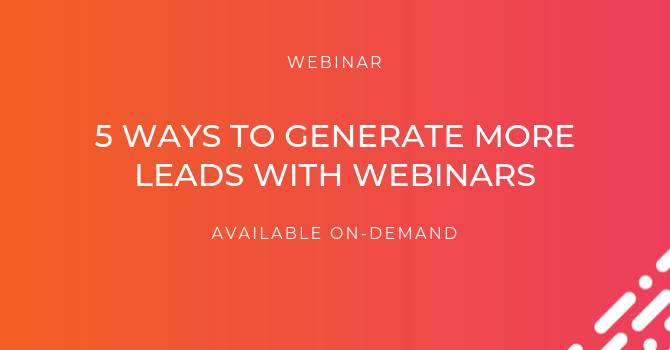Having worked in lead generation and marketing for the last five years, I’ve been pulled into countless meetings where I’m told by managers that we need more quality leads asap because we’re not pacing to our monthly or quarterly sales targets.
Even if the increased budget is available to flood the sales pipeline with new leads, this approach is ineffective because lead generation is not a simple input = output equation. Let me explain why.
Lead generation is a strategy used by sales and marketing teams to develop and maintain a healthy sales pipeline through audience building. Marketing and sales teams use a mix of inbound marketing tactics, webinars, paid advertising, events, and PR activities to introduce a steady stream of leads into their pipelines.
Once a lead is generated, it enters into your sales and marketing ecosystem to be nurtured and hopefully converted into a customer. Depending on your product or service, industry, and length of your buyers’ cycle, converting leads can take anywhere - from a few days to year - and involves a series of customer touchpoints.
This is why lead generation models shouldn’t be treated as linear, or a simple numbers game to solve for short-term sales targets.
For example, you can’t double your marketing budget for the month and expect double the results with all other things equal. Even if your marketing team can acquire twice as many leads by increasing spend, the quality of these leads will vary and you’ll overwhelm your sales team - resulting in a lower conversion rate and lower ROI.
The best way to successfully scale, is to maintain a balanced lead generation ecosystem and focus on driving a mix of quality leads from a variety of channels.
What are quality leads?
So, how do you define a ‘high quality’ lead? High quality leads refer to leads with a high propensity to convert into paying customers. The higher the quality of your leads, the more likely they are to purchase your product or service.
Classifying leads as ‘high quality’ should be determined using lead scoring techniques that systematically attribute values to your leads based on criteria like lead behaviour, lead source, product fit, and persona match. Lead scoring considers both positive and negative actions taken by your leads and attributes higher scores to actions that indicate they are more likely to convert such as completing a product demonstration or contacting your sales team.
High quality leads typically have a strong product fit, which increases their customer lifetime value and retention. They are easier for your sales teams and customer retention teams to manage, but are usually more expensive for your marketing team to acquire.
The Cost of High Quality Leads:
High quality leads come with a higher acquisition cost which can quickly deplete a marketing budget. There are two main reasons behind the increased costs:
- Simple economics - there is a limited number of high quality leads for your product or service out there at any given time which drives up advertising costs and your lead acquisition costs
- Qualified leads are likely to be using one of your competitors products or services, which makes it harder to turn them into a customer because you will also need to overcome their switching costs
The increased costs for quality is why most marketing teams will focus on generating high and medium-quality leads for their sales pipeline. Medium quality leads will be less expensive to acquire and still have potential to convert, but may be more difficult for your sales team to close the deal, or have a shorter customer lifespan which can inflict stress on other areas of the sales funnel.
This is unfortunately a necessary evil for marketing teams faced with targets that focus on short term sales targets, and teams need to be structured in a way that helps sort and nurture leads based on quality to ensure success.
In order to run a successful lead generation strategy, you need to treat your sales funnel as an ecosystem with everyone working towards the same results. This means structuring your team to effectively nurture a diversified lead pool, and having a mix of both short term and long term strategies in place to maintain the overall health of your sales funnel.
Pro tip for marketers: Never accept KPIs or targets that are based on the quantity of leads you acquire. Vanity metrics like this incentivize you to compromise the quality of your leads in order to reach that magic number. Instead work with your management to come up with a quality metric that contributes to the desired outcome.
Looking to generate more high quality leads? Learn how webinars can help from WorkCast's CEO, Stewart Kibby.
Share this
You May Also Like
These Related Stories

5 Ways to Generate More Leads From Your Webinars

Unlocking the Power of Webinars for Demand Generation: Tips and Tricks





